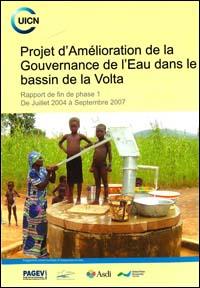

Related content
Unite for Nature on the path to 2045
Unite for Nature on the Path to 2045: A 20-Year Strategic Vision for the Union articulates IUCN’s commitment to “a just world that values and conserves nature” and establishes a clear direction for the next two decades. It guides collective efforts to safeguard biodiversity, inspire societal engagement, and drive transformative change toward a sustainable future.
Unite for Nature on the path to 2045
Unite for Nature on the Path to 2045: A 20-Year Strategic Vision for the Union articulates IUCN’s commitment to “a just world that values and conserves nature” and establishes a clear direction for the next two decades. It guides collective efforts to safeguard biodiversity, inspire societal engagement, and drive transformative change toward a sustainable future.
Unite for Nature on the path to 2045
Unite for Nature on the Path to 2045: A 20-Year Strategic Vision for the Union articulates IUCN’s commitment to “a just world that values and conserves nature” and establishes a clear direction for the next two decades. It guides collective efforts to safeguard biodiversity, inspire societal engagement, and drive transformative change toward a sustainable future.
Unidos por la naturaleza en el camino hacia 2045
«Unidos por la naturaleza en el camino hacia 2045: una visión estratégica de 20 años para la Unión» articula el compromiso de la UICN con «un mundo justo que valora y conserva la naturaleza» y establece una dirección clara para las próximas dos décadas. Orienta los esfuerzos colectivos para salvaguardar la biodiversidad, inspirar el compromiso social e impulsar un cambio transformador hacia un futuro sostenible.
Unidos por la naturaleza en el camino hacia 2045
«Unidos por la naturaleza en el camino hacia 2045: una visión estratégica de 20 años para la Unión» articula el compromiso de la UICN con «un mundo justo que valora y conserva la naturaleza» y establece una dirección clara para las próximas dos décadas. Orienta los esfuerzos colectivos para salvaguardar la biodiversidad, inspirar el compromiso social e impulsar un cambio transformador hacia un futuro sostenible.
Unidos por la naturaleza en el camino hacia 2045
«Unidos por la naturaleza en el camino hacia 2045: una visión estratégica de 20 años para la Unión» articula el compromiso de la UICN con «un mundo justo que valora y conserva la naturaleza» y establece una dirección clara para las próximas dos décadas. Orienta los esfuerzos colectivos para salvaguardar la biodiversidad, inspirar el compromiso social e impulsar un cambio transformador hacia un futuro sostenible.
Smart DESERT project: Sustainable Agriculture for Resilient Livelihoods and Economic Empowerment
The Smart DESERT project was funded by the French Development Agency (AFD) with a total budget of EUR 10 million and implemented by a consortium of organisations led by IUCN ROWA, targeting the area of the North-East Badia highlands in Jordan. The project was designed to achieve two key objectives: (1) increased year-round income and (2) improved work conditions, with an overarching goal of economic empowerment of Syrian refugees and vulnerable Jordanians in the agricultural sector.
The project addresses key challenges such as water scarcity, land degradation, rural unemployment, and limited market access. By introducing water harvesting systems, regenerative agriculture practices, and digital tools, Smart DESERT helps farmers improve productivity, conserve natural resources, and build climate resilience. It also supports the creation of home-based agribusinesses and facilitates connections to markets and finance.
Lignes directrices sur l’exploitation des espèces menacées
Les sociétés du monde entier exploitent les espèces sauvages, dans une mesure plus ou moins grande, pour l’alimentation, les matériaux de construction, les soins de santé, les médicaments, la lutte contre les parasites, l’ornementation, générer des revenus, les loisirs, ainsi qu’à des fins culturelles et spirituelles. Si cette utilisation des espèces sauvages contribue directement au bien-être de milliards de personnes dans le monde, la surexploitation des espèces sauvages est l’un des principaux facteurs de perte de biodiversité.
Priročnik in orodja za presojo vplivov v kontekstu svetovne dediščine
As the World Heritage Convention celebrates its 50th anniversary in 2022, over 1100 sites around the world are recognized as World Heritage – places that are so valuable to humanity that there conservation has been deemed our collective responsibility. Yet many of these exceptional places face increasing pressure from diverse types of development projects within and around the sites. Assessing the impacts of such projects is essential to both prevent damage to World Heritage and identify sustainable options. This Guidance and toolkit explains the process for achieving these goals. Offering practical tips and tools including checklists and a glossary, it provides a framework for conducting impact assessments for cultural and natural heritage sites.
Guide sur l’évaluation des impacts cumulatifs sur la biodiversité des projets éoliens et solaires et des infrastructures associées
Un objectif clé de ce guide est de recadrer l’EIC pour aider à soutenir la conservation de la nature et la réalisation des objectifs mondiaux en matière de biodiversité (aux côtés des objectifs climatiques et autres objectifs de développement sociétaux). Ce guide est centré sur la biodiversité et le développement éolien et solaire, et s’adresse principalement aux planificateurs gouvernementaux et aux promoteurs de projets. Cependant, étant donné qu’il est conçu pour aider à relever certains des défis existants de l’EIC, sa portée est potentiellement plus vaste.
Smart Conservation Platform-Driven Sustainable Development: A Case Study of the Bogda Component, Xinjiang Tianshan World Natural
The Bogda Component of Xinjiang Tianshan World Natural Heritage Site exemplifies representative geomorphological features and ecosystems of Xinjiang Tianshan. As a quintessential arid landscape in Eurasia’s hinterland, it showcases remarkably distinct and complete vertical zonation of mountain natural landscapes within minimal distances. This includes: snow-capped peaks and glaciers, pristine forests and meadows, crystal-clear rivers and lakes, expansive deserts. It achieves a remarkable convergence of stark contrasts: heat and cold, aridity and humidity, desolation and beauty, grandeur and delicacy. To realize win-win protection and development, the site is steadily advancing its smart conservation management platform, providing foundational support for sustainable development.

